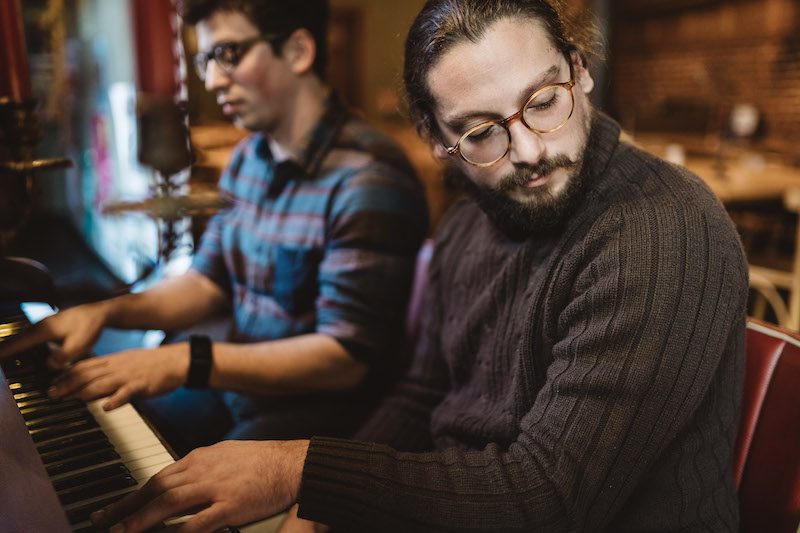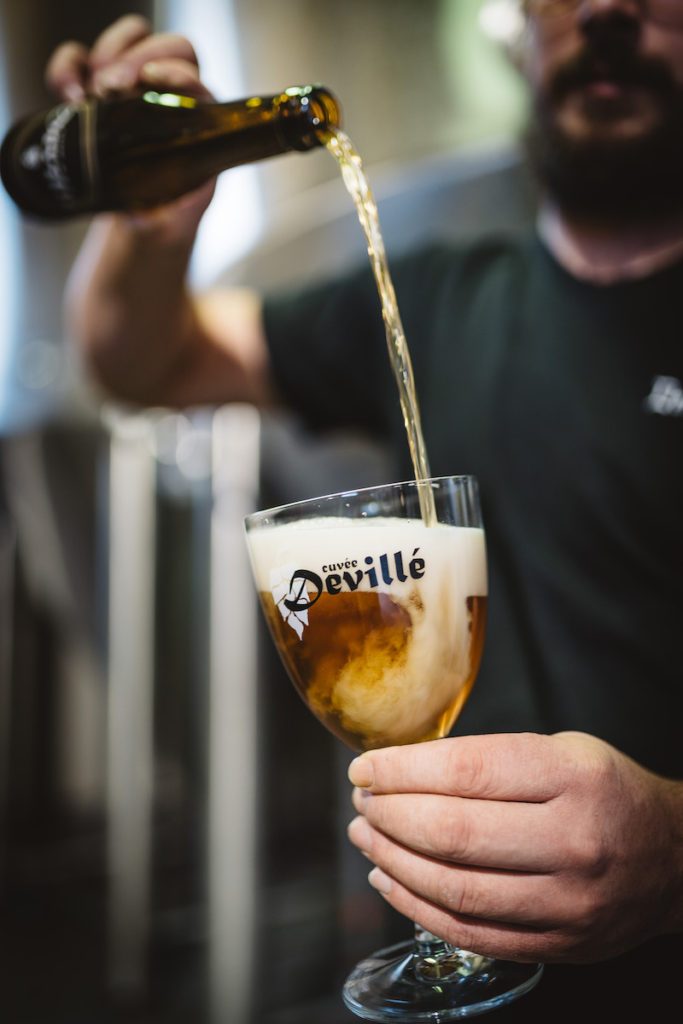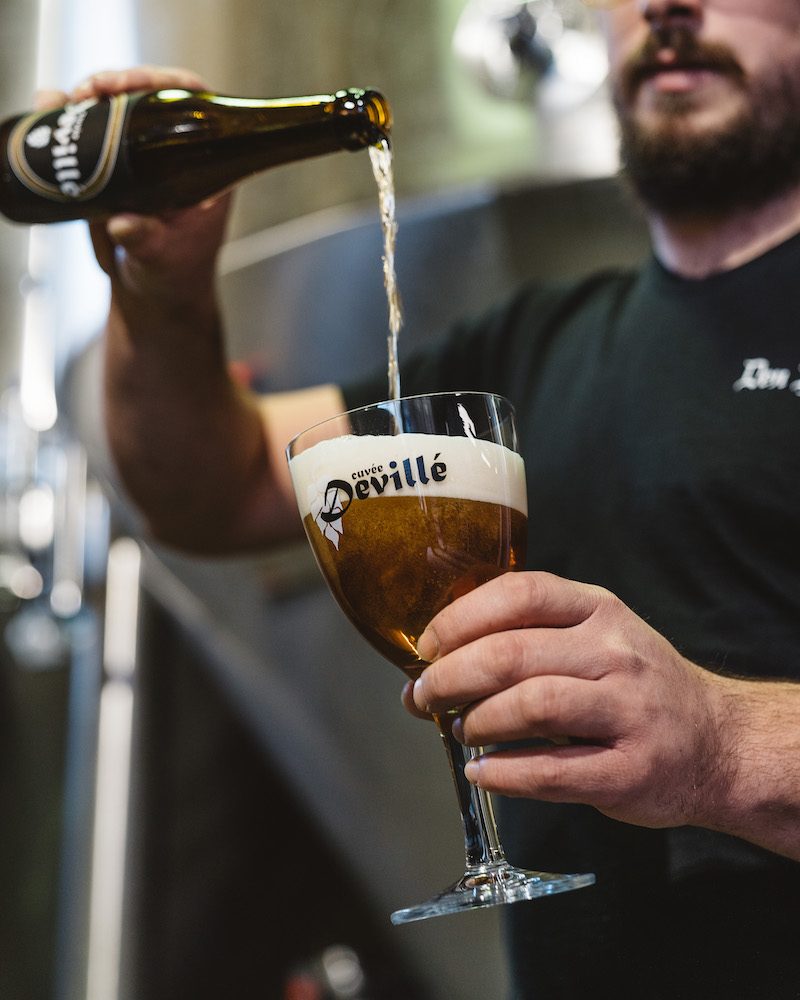Lambic, like music, requires years of dedication and a consuming passion. Breandán Kearney explores how Brouwerij Den Herberg set out to produce the latest Payottenland Lambic.
Words by Breandán Kearney
Photos by Cliff Lucas
Edited by Paul Walsh
A version of this article was previously published in Issue #16 of Belgian Beer and Food Magazine.
On a Spring evening in 2000, Bart Devillé sat amongst a three hundred strong congregation as two young boys walked past an orchestra and sat down at separate pianos in front of the church altar.
Piano Concerto No. 10 was the only piano concerto that Wolfgang Amadeus Mozart wrote for two pianos together, supposedly so that the Austrian composer could play the piece with his own sister, Marianne. The two boys about to perform were also siblings, Bart’s sons—Akke Devillé, aged 13; and Kloris Devillé, aged 10.
The Church of Don Bosco was one of two churches in Buizingen, a village in the heart of Belgium’s Payottenland. The region is known for its gently rolling hills, stone walled farmsteads and semi-industrial villages, at one time providing the majority of food and drink for the city of Brussels, located 18 kms to the north east. It’s also the home of Lambic, a regional wheat beer whose major flavour characteristics derive from wild yeast and bacteria which drop from the night sky onto exposed cooling wort which is then transferred into wooden barrels or foeders for a slow, organic or “spontaneous fermentation”.
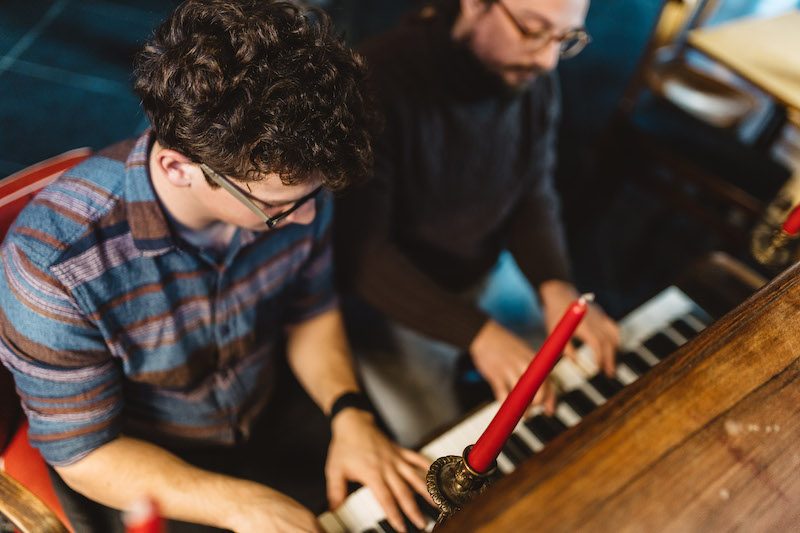
Lambics can be old and young, carbonated or flat, fruited or unfruited, and sweetened or unsweetened. Different Lambics are blended into Geuze. In their deeply-researched book, “Lambic Land”, Webb, Pollard and McGinn describe Lambics as “both the crudest and the most complex beer styles in the world.”
Consistent with the Flemish stereotype, Bart—short in frame and with tussled hair—adopted a practical, matter-of-fact approach to life, often seen in public wearing his thin-rimmed eye-glasses and a cotton scarf. Busying himself with various construction projects, including making musical instruments, he often found himself contracted for work at Lambic breweries in the Payottenland. One one job, tiling walls at Brouwerij Boon, he remembered Frank Boon saying to him that the job of a brewer is only completed once the glass of the drinker has been emptied.
A few months prior to his sons’ concert, Bart and his wife, Ann Heremans, had signed up to a brewing course at the Coovi evening school in Anderlecht. Turning up to their first class late and unsure of what to expect, they saw that only one other person had registered for the class. Undeterred, Bart and Ann constructed their own 150 litre homebrew system, attended class every week and began brewing a top fermented blonde ale in their home in the Payottenland.
In the Church of Don Bosco, Akke Devillé and Kloris Devillé danced through the first movement, ‘Allegro’, playing with vigour and freedom. The second movement was a more pensive, slow and refined ‘Andante’. The finale, the ‘Rondo’, was a rythmic drive combining passages of lyrical grace with a sense of exuberance, an emotive musical dialogue between the two brothers. Akke played with purpose and devotion. Kloris, the younger of the two boys, played less predictably but punctuated the music with moments of incredible flair. The performance begged patience from the audience in its more challenging moments, but yet, somehow, was completely accessible for all those listening. A moment’s silence after the boys finished playing was followed by rapturous applause.
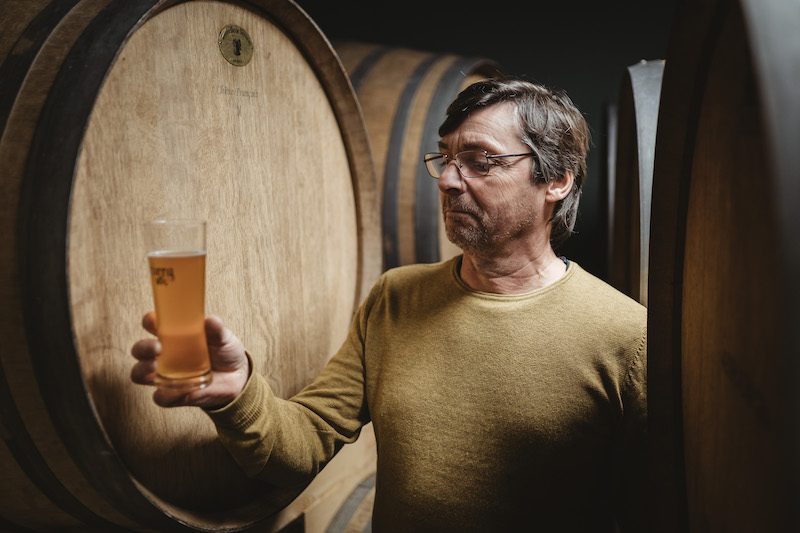
Today, Lambic and Geuze are experiencing a revival of interest. Overall, hectolitres of production have increased. New Lambic brewers have emerged—Lambiek Fabriek in Sint-Pieters-Leeuw, 7 kms from Buizingen, released their own Lambic in 2017.
There’s an interest outside of the Payottenland in recent years too. Some are blending with Lambic from the region, like Raf Souvereyns of Bokke (Limburg). Some are producing spontaneously fermented beer in the spirit of Lambic, like Tom Jacobs of Antidoot Wilde Fermenten (Flemish Brabant). And some are replicating the exact techniques of Lambic production to make other styles, like Brouwerij Omer Vander Ghinste with its Cuvée des Jacobins (West Flanders).
It is the people of the Payottenland, however, who lay the greatest claim to Lambic. They are the ones who kept it alive during the lean years, when it was commercially shunned and dismissed as an historical quirk. There is still tension surrounding the naming of spontaneously fermented beers, particularly when those outside of the Payottenland use the term “Lambic”. “If I am born in New York, I do not call myself a Londoner,” says Frank Boon. “If I make wine in California, I do not call it Burgundy.”
Bart popped open a Lambic to celebrate after the concert. After having just started the course at Coovi, he marvelled at how different his homebrew could be to the beer now in his hand, dry and acidic, fruity and characterful.
He wondered not only whether he could acquire the technical know-how to create a Lambic, but whether the expectation of the beer would be higher if what was produced was of the Payottenland.
In that moment—bullish, proud and emboldened by the gallant piano performances of his sons—Bart Devillé vowed to find out.
On 1 February 2007, Café Den Herberg opened in Buizingen. On one side was a spacious room with tall wax candles scattered around large circular tables. On the far side, through a small corridor leading to the brewery space, was a converted garage and basic brewing system. The room in between, the one that contained the long bar, was like a central atrium between production and consumption. Propped up against the wall in the middle of this space was the light brown French Pleyel piano on which Kloris had learned to play.
Bart’s seven children wanted to contribute to Den Herberg from the outset. Akke, now with long hair, shaggy beard, and his father’s penchant for thin-rimmed eye-wear, still played music occasionally but was more interested in helping with the family business. He started working in the bar immediately and began helping his father in the brewery when it opened proper in 2008. Fien, a speech therapist in nearby Essenbeek, called in to assist when required. Charlien worked in the bar with Akke. Roxan, Rimski and Ilinka—all still students—were part-time bar staff when school was out. Kloris was excited by the family plans, but still, he dreamt of music.
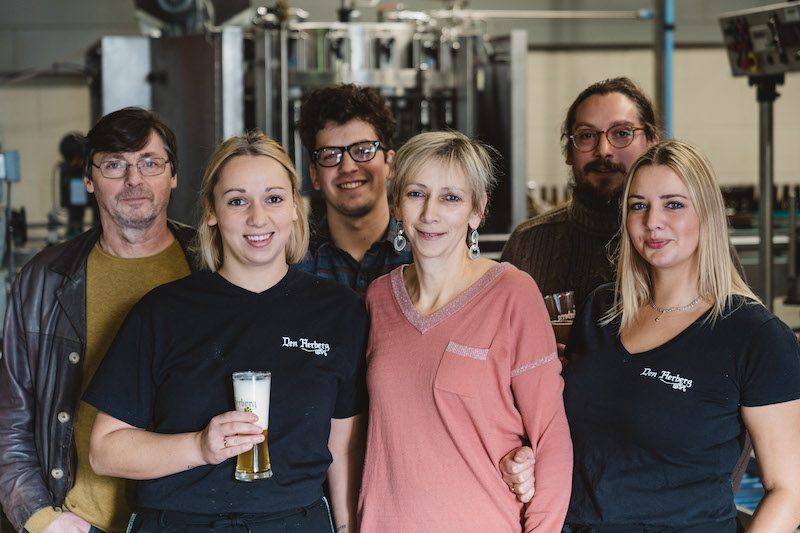
Bart was brewing “clean” top-fermented ales with Akke, using predominantly malted barley. Lambics, on the other hand, must contain at least 30% unmalted wheat, a requirement set out as Belgian law in a “Royal Decree on Beer” of 31 March 1993. Raw wheat requires complex mashing methods to break down its proteins while leaving a good supply of starches and free amino nitrogen for wild yeast and bacteria to feed on during longer, slower fermentations.
Not long after the opening of Den Herberg, Kloris was accepted to study music at the Conservatoire Royale de Bruxelles, the most prestigious music school in Belgium. He shaved his face and brushed his hair every morning before piano study, his full-time focus from Monday to Friday. He taught in the Mierennest music school in Dworp on Saturdays and helped out behind the family bar on Sundays.
Just after Den Herberg brewery opened, beer enthusiasts from other countries starting showing up. Masaharu Yamada from Japan had lived in Brussels in the late 1970s as a jazz pianist but was visiting Den Herberg this time as a beer enthusiast. In 1988, Yamada opened a Belgian beer café and Belgian influenced restaurant in the trendy Akasaka neighbourhood of Tokyo in which he installed seven different fridges to serve Lambic at seven different temperatures. In a 1999 article in the Independent, beer writer Michael Jackson hailed Yamada’s Bois Cereste café as the institution which “pioneered the serving of Belgian beer in Japan.”
Bart saw the international interest as a sign to continue growing his portfolio of beers. Soon, he had added a Wheat Ale, an Amber Ale and a Brown Ale to his Blonde. He bought fresh Belgian grown hops from Joris Cambie, a hop farmer in Poperinge in the North West of Belgium. The hops were certified organic, freshly picked and then pelletised, and used as soon as possible in the beers to capitalise on the alpha acids in the hops for bitterness and the essential oils for aroma and flavour.
It’s the inverse approach to that of Bart’s colleagues in the Payottenland who are brewing Lambic. They don’t want the bitterness from isomerised alpha acids to conflict with the acidity of their beers but, given that the beer would be sitting on wood for up to three years, they did require the preservative and foam stabilising qualities that hops offer. Their solution has been to use aged hops.
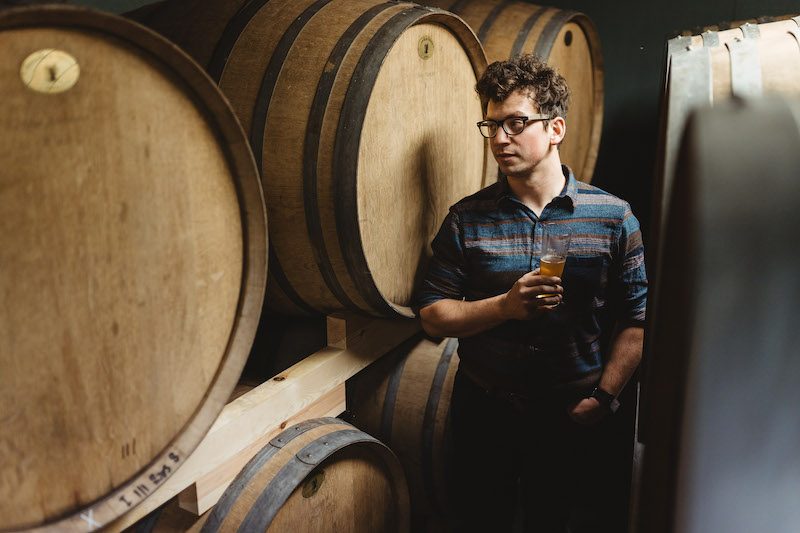
Kloris’ final exam, after five years of full-time study, was a performance in 2012 in the Concert Hall of the Conservatory. He performed Piano Concerto No. 1 in E-flat major by Franz Liszt, accompanied by his teacher, the famous Moldovan pianist, Mikhaïl Faerman. After passing the exam, he began searching for positions as a professional musician. Symphony orchestras can require up to as many as 30 violinists and 12 cellists, but they will only ever need one piano. Contracts for musicians were thin on the ground. Kloris considered his options.
Bart discussed his ideas for the future with Kloris, including the possibility of his coming in to help lead more ambitious projects in the brewery. Instead, on 1 September 2012, Kloris got on a plane to Australia with his girlfriend, Margo Cammue. They would spend the next 6 months working in raspberry farms as they made their way down the east coast from Cairns to Melbourne.
Even though Bart had taken his homebrewing passion full-time, brewing batches of 1800L of “clean” top-fermented ale in his own commercial brewery and selling it locally in his newly established family café, he had still not realised his dream. Before Kloris left, the Devillés had begun working on a “wild” beer. Once Kloris returned, Bart and Akke agreed, they would finish it together.
Kloris returned from Australia ready for something new. He wasn’t shaving as much and his hair had grown into a large mop of curls. He took classes in biochemistry and electrics, helping out in the family café and brewery when needed. When a position became available at the John Martin Group of breweries in Belgium, Kloris applied. He started in sales in August of 2013. The John Martin Group were in the process of opening two new breweries: one they were hoping to buy on the Mont St. Jean farm in Walloon Brabant, a few kms from the site of the bloody Waterloo battle of 1815; and one in Bruges where they would brew a Flemish Red-Brown beer of mixed fermentation called Bourgogne des Flandres.
While those two breweries were being developed—Waterloo would open in 2014 and Bourgogne des Flandres would open in 2016—Kloris was offered the opportunity to brew at another of John Martin’s facilities, a Payottenland brewery in the village of Itterbeek, one which claims to be the oldest Lambic brewery in the world: Brouwerij Timmermans.
When Kloris first started working at Timmermans, head brewer Willem Van Herreweghen asked him to think about two items that had been sitting outside in the summer: a slice of brown bread and a rich cream cake. Van Herreweghen asked Kloris which he would choose, to satisfy his hunger, after the passing of a week. “You always choose the brown bread,” says Kloris. “It’s far poorer in food for negative bacteria so it won’t spoil.” It was an early lesson that the art of brewing Lambic was all about producing complex sugars rather than simple ones, slow fermentations rather than fast.
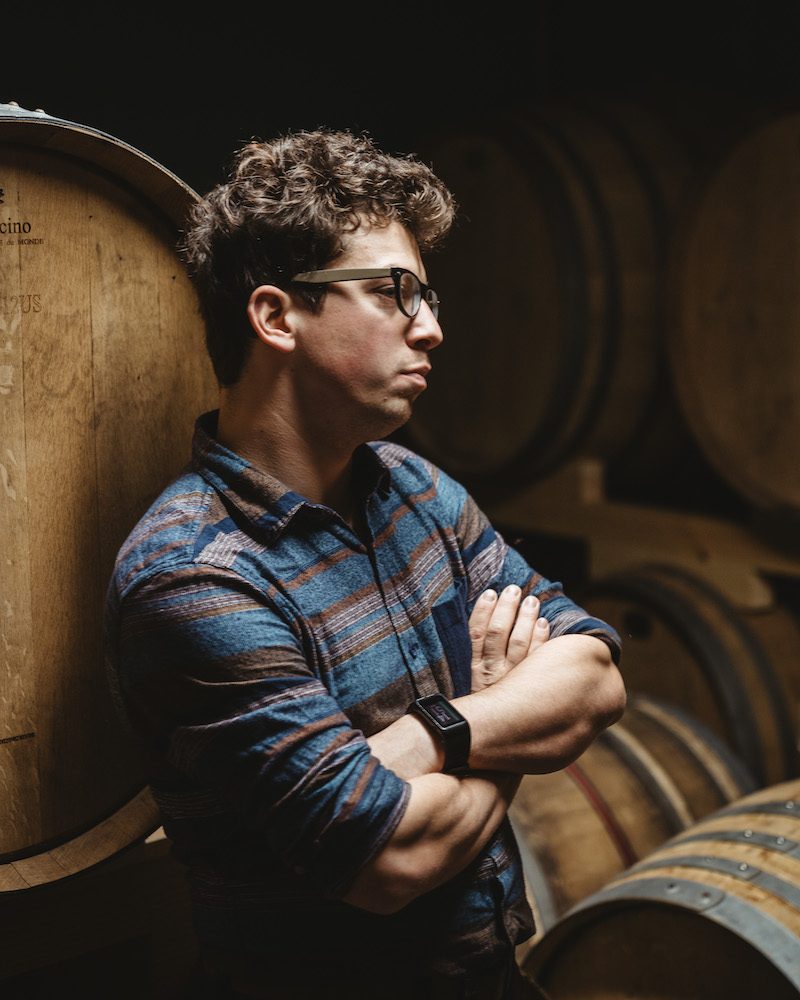
Armed with a more technical understanding of the production of Lambic and the experience garnered while working under Van Herreweghen, Kloris went back to Bart and Akke at the end of 2013 to continue their work on a “wild” beer. Father and sons would take inspiration from Orval and brew an Amber Ale fermented with both Saccharoymces (the “clean” yeast with which they were already working) and Brettanoymces—”British fungus”—a wild yeast important in Lambics which is often seen as a contaminant in Ales and Lagers, with characteristics considered unwelcome “off-flavours” in those beers.
There are many strains of the wild Brettanoymces yeast—Bruxellensis, Lambicus and Claussenii are the most well-referenced in Lambic—and flavour attributes can range from fruit and spice to horseblanket and acid. Brettanoymces is slow acting, making it difficult to manage. The more sugars it eats, the more carbon dioxide it will produce. The Devillés endured a frustrating period of trial and error, finding themselves with over-carbonated bottles which poured like ice-cream foam, impossible to sell.
The other major issue they encountered was the increased diligence required in cleaning tanks and bottling lines, the risk being that a small infection of Brettanomyces would render all their other beers “wild” and virtually impossible to package and sell. “That beer was good practice for introducing Brett into the brewery,” says Kloris. “Especially in the most dangerous part, bottling.”
Bart presented the Cuvee Devillé for the first time publically in 2014 at one of Belgium’s biggest beer events, Zythos Beer Festival. Word of mouth travelled around the large room in the Brabanthal that a small family brewery from the Payottenland was pouring an “Orval clone”, a Belgian Pale Ale that had been fermented, at least partially, with Brettanomyces. Queues quickly began forming at the Den Herberg stall and within a short period of time, the beer was sold out.
Bart was confident that, with the help of Kloris and Akke—now both accomplished brewers—it was the right time to make brown bread.
Bart mashed in on a batch of wort for spontaneous fermentation for the first time on Christmas Eve of 2016. At Timmermans, the “slijmmemethode” of turbid mashing involved an archaic tun from the 1920s with a perforated copper disk system—the “Madammen”—which would enable part of the wort to be filtered off, heated, and added back again, effectively creating phases of saccharification and a complex sugar bill.
Bart didn’t have “Madammen” or the ability to decoct, so he mashed in his regular brewhouse, but at high enough temperatures for enzymic activity that would create more complex sugars. He boiled the wort for 4 hours, just as the other Payottenland Lambic brewers do, and prepared to transfer his milky white liquid to a traditional Lambic cooling vessel.
The coolship—a wide, shallow bath used by Lambic breweries to cool wort overnight—is usually in a central place in the brewery, often raised to areas near the roof where cooler air can pass over it through ventilation hatches. Bart didn’t have the space or the funds to install a permanent coolship, so he cut open a plastic container to create a mobile coolship and lifted it by forklift into the middle of the brewery for filling. The wort cooled in Bart’s coolship overnight, the late December temperatures optimum for the spontaneous inoculation he desired.
On Christmas morning, Bart and his sons filled the innoculated wort into a range of wooden barrels of various sizes, mostly from France. Later, in a bid to separate “clean” from “wild”, they would fill cooled wort into semi-rigid plastic cube-shaped containers and transport it to a warehouse in Lembeek. Here, in the home of Lambic, where humidity levels were monitored and light was eliminated, they would fill a growing stock of wood.
“Our work is only just starting,” said Bart to Kloris and Akke after the first brew.
They made their way home for Christmas dinner and Bart turned to his two sons. “The real performance comes when the beer in the glass,” he said. “And the drinker gets to empty it.”
On one night in early May 2017, Bart pulled samples for tasting his young Lambic, now not even six months old. It did not taste as he had hoped, presenting with high levels of sulphur compounds, low levels of acidity and notes of tetrahydropyridines, compounds presenting as “old leather”.
After a few moments with glass in hand, staring across the bar into space, brow furrowed, Bart cleaned away the glasses, closed the lid of the piano and turned off the lights.
During the Toer de Geuze in May 2017, Bart, Kloris and Akke visited Brouwerij Boon, not far from their own house in Lembeek. Some say the term “Lambic” comes from the name of this village, often spelled “lambik” or “lambiek”, depending on the dialect of the inhabitants of the region using it. At the end of the 18th Century, there were over one hundred Lambic producers in the Payottenland. Today, there are around fifteen.
The Toer de Geuze is a Biennial event coordinated by HORAL, the “High Council for Artisanal Lambic Beers”. It’s the only time that all the Lambic brewers and blenders of the Payottenland open up their doors to the public at the same time. Bars and other breweries in the surrounding area schedule events in the days that precede the “Tour” to capitalise on the increased international footfall in the region. In Brouwerij Boon that day, there were visitors from all over the world.
Through Boon’s forest of foeders, Bart recognised Masaharu Yamada from his many visits to Den Herberg and the Devillé father and sons went to say hello. At Boon, these large wooden vats, 161 of them ranging from 40HL to 270HL in size, hold 2.1 million litres of aging beer between them across four maturation rooms, the perfect vessels for the slow acidification and development of flavour in Lambic. Standing there amongst the largest stock of Lambic on oak in the world, Bart, Akke, Kloris, and Yamada shared an Oude Geuze Boon and talked in broken English—the common language—about jazz piano and Mozart concertos.
The process of Lambic fermentation shares a similar structure to a piece of music—“both classical arts,” says Kloris when comparing the two. The initial 6 months, like the first “Allegro” movement of Mozart’s Piano Concerto No. 10, is a free-flowing fermentation driven by Enteric bacteria and various Saccharomyces species, lively and playful in their formation of alcohol, carbon dioxide and fruity esters.
By the time the second movement kicks in—a more slow-moving, sophisticated and at times challenging “Andante”—a lactic acid bacterium called Pediococcus produces lactic acid and diacetyl for 3 to 4 months, sometimes causing “ropiness”, but over time, delivering complexity, character, and meaning.
The finale, like the rythmic drive of the “Rondo” with its passages of lyrical grace and exuberance, is the movement performed by the Brettanomyces yeast. It produces a range of compounds, from acetic acid (red wine or vinegar), various volatile phenols (associated with medicinal or barnyard-like aromas) and caprylic and capric acids (associated with “goaty” flavors).
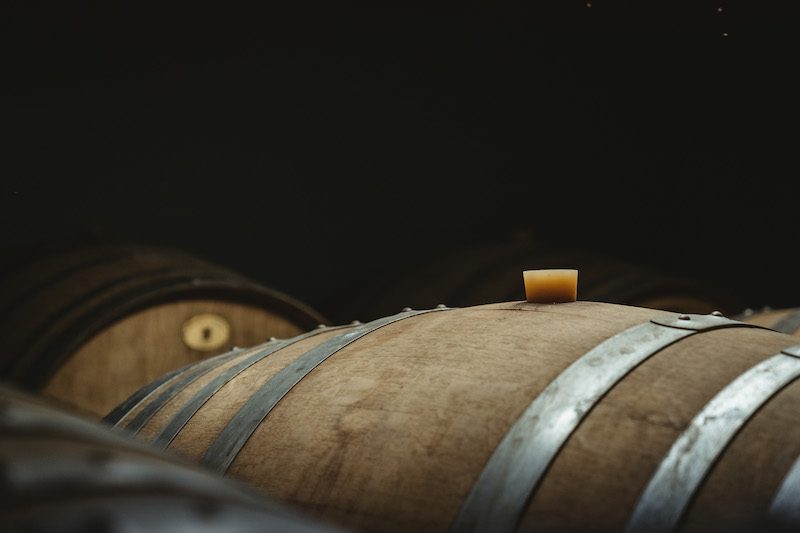
The instrument itself—the oak barrel—has a major impact on the performance too, sometimes contributing tannic or vanilla notes from the wood, but most importantly, providing acoustic resonance.
Before they parted ways in Boon’s foeder room, Bart extended an offer to Yamada to visit Buizingen again on his next trip to Belgium. It would be Bart’s pleasure if the Japanese bar owner would play jazz piano in Café Den Herberg. Yamada agreed, but only if they could share another Payottenland Lambic together when he came. Bart nodded and hoped that it would be his own.
In the summer of 2018, Bart released Den Herberg’s first spontaneously fermented beer, the newest Lambic from the Payottenland. The beer had been maturing for 18 months, during which time it had changed almost irrecognisably. Curious visitors from other Lambic breweries passed by, including Armand de Belder of Brouwerij Drie Fonteinen, Gert Christiaens of Geuzestekerij Oud Beersel, Frank Boon of Brouwerij Boon and Willem Van Herreweghen of Brouwerij Timmermans. The media attended a press launch at Den Herberg on 18 July to try the beer from 5 litre bags-in-a-box that Bart had prepared.
What they encountered was a hazy golden beer with aromas of stone fruit and a malty, citrus-like, flavour. A background oakiness propped up notes of wet hay and tart apple, hints at what would come from Den Herberg should maturations be given more time. Overall, Den Herberg’s Lambic was soft, projecting a moderate lactic acidity with a balance toward drinkability. Bart smiled, but in his matter-of-fact, modest way, he behaved as if the plaudits were immaterial. Only Kloris acknoweldged their significance. “The other Lambic brewers all recognised it as a good Lambic,” he said. “After everything we had been through, that was important for us to hear.”
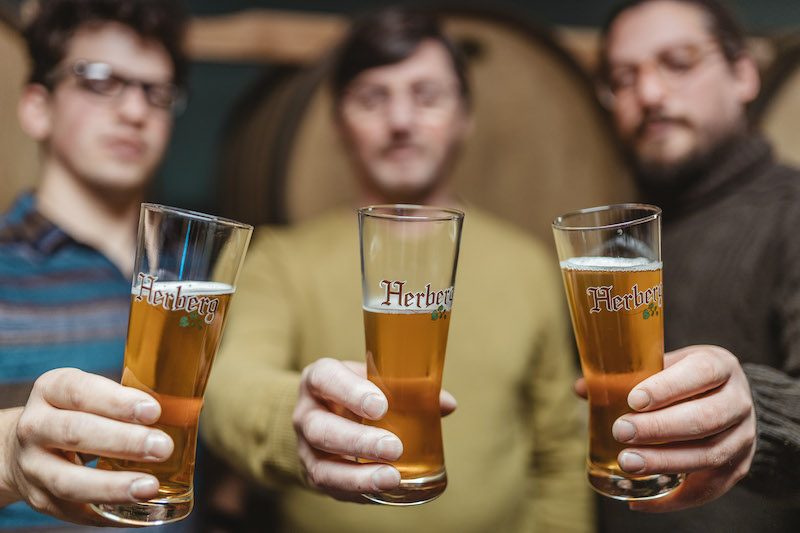
On the evening of 22 September 2018, Bart hosted a Japanese jazz evening in Café Den Herberg. About 100 people filled the bar, half locals from the Payottenland, half jazz geeks who had been waiting to see Yamada perform. A Japanese catering company from Ghent served sushi and other Japanese specialties. Yamada played keyboards, accompanied by his Japanese colleagues on drums, trumpet and flute.
Before Masaharu Yamada left that evening, he bought several boxes of Den Herberg Lambic. He would be back again the following year, for the Toer de Geuze in early May of 2019. And again after that. If it had not been for the Covid-19 Pandemic travel restrictions, he might have also attended the launch in August 2020 of Den Herberg’s first ever Oude Geuze, a blend of their one, two, and three year Lambic.
On that September evening in 2018 at Café Den Herberg, Kloris didn’t join in with the musical jam. Nor did Bart or Akke. They were exhausted after a long week of brewing and, because none of them had practiced in a while, they felt insecure about their instrumentation. Bart, Kloris, and Akke stood side by side in their family café listening to the performance, all three short-in-frame, hair unkempt, eye-glasses thin-rimmed and functional. They were no longer musicians. Now, they were Lambic brewers from the Payottenland.
*


